Even beyond the boundaries of the showground, the RHS Chelsea Flower Show always manages to create incredible buzz and excitement, about all things gardening. Every year, after the show, the urge to get into the garden is overwhelming and unfortunately so too, is the urge to acquire every (new) favourite plant seen at the show. A handful of rather clever people have managed to harness the energy surrounding the show, and created related activities to spread the excitement further. Tim Richardson’s brainchild Chelsea Fringe for example, includes a huge array of activities, organised by volunteers across the capital, including (a.o.) garden parties, guerrilla gardening, edible bus-stops, edible Olympics, floating forest, street meadows, and urban allotments. Retailers too, were encouraged into the floral swing of things, where as part of Chelsea in Bloom, shop fronts were transformed into incredible floral displays, worthy of RHS Chelsea itself.
Streets and shop fronts are too often rather sterile places, clad in little more than glass and concrete. Though with floral exhibitions such as Chelsea in Bloom, even the most lackluster of streets look inviting and exciting. Judged by an RHS panel, twenty eight Chelsea based, participating retailers compete to win the best floral display.
Initiatives such as Chelsea in Bloom, despite unfortunately limited to the Sloane Square area, should be encouraged, extend its scale and feature on a (semi) permanent basis. Granted, budgets around Sloane Square may be too generous for some, but even independent shops were able to participate, showing what can be achieved not just with limited space, but also smaller budgets. Furthermore, with their plight in mind, use of plants that are attractive to native pollinators, could also be encouraged. One can certainly envision Sarah Raven extending her compelling ‘Bees, Butterflies and Blooms‘ campaign to include, retailers in city centres.
This may all sound rather Elizabeth Bennett, but as the participating retailers will undoubtedly confirm, initiatives such as these, do provide much needed return on investment. Jennifer Hirsch, Botanical Research Manager at Liz Earle, explained that their (winning) display provided not just interest from the public/passing trade, but a reason to engage with (new) customers about the botanical ingredients sourced from herbs, featured in both their display as well as their products. Heightened interest and walk in’s increase the chances of till action, which in the current recession is key. Whilst (im)patiently waiting to take a good photograph, one couldn’t help but notice the mounting interest from sizeable passing crowds, both delighted and interested by the plants and flowers. Furthermore, additional exposure generated through the Chelsea in Bloom website, tours, as well as related press coverage should impact both goodwill as well as future sales.
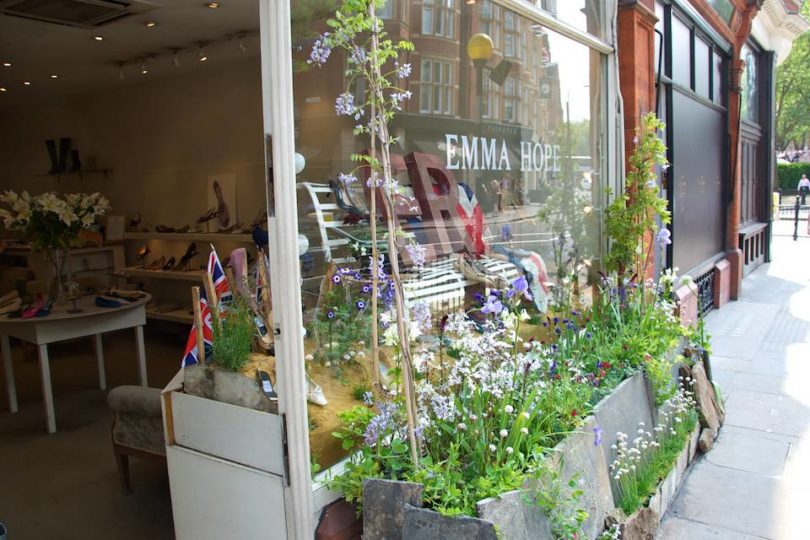
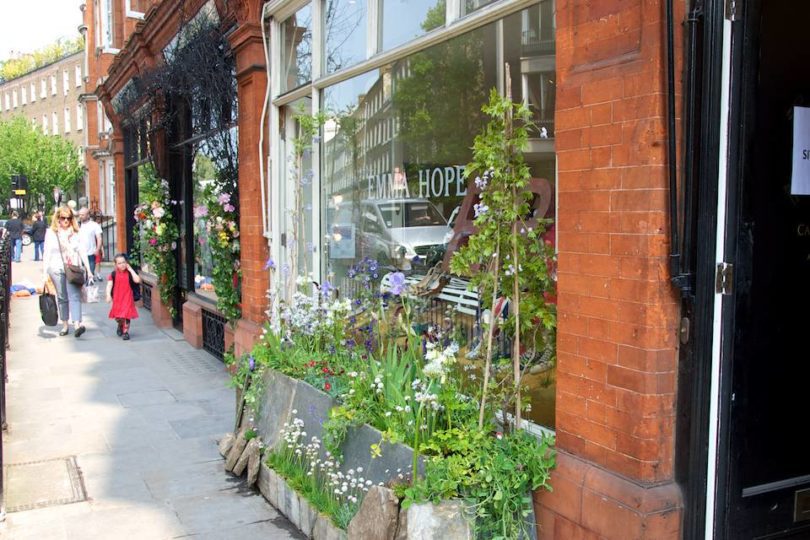
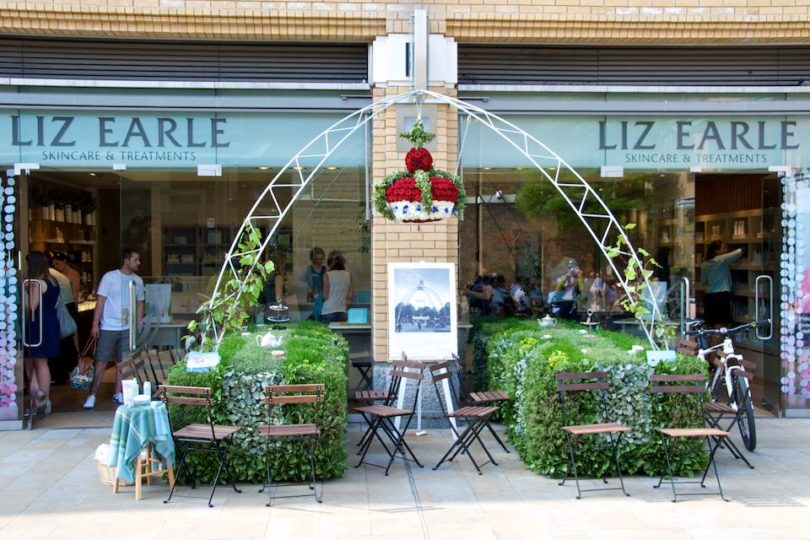
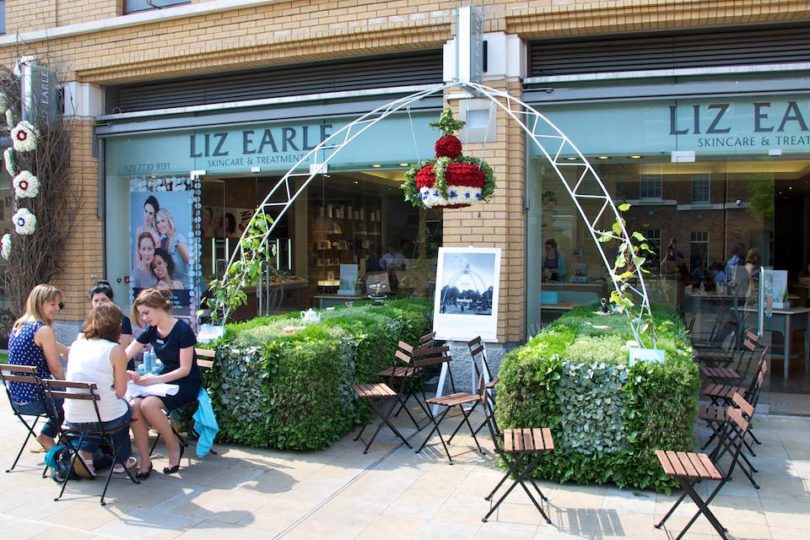

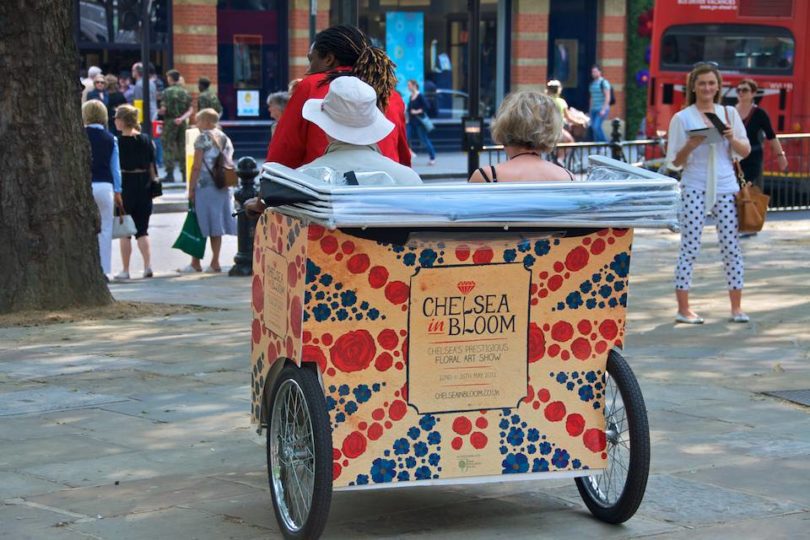
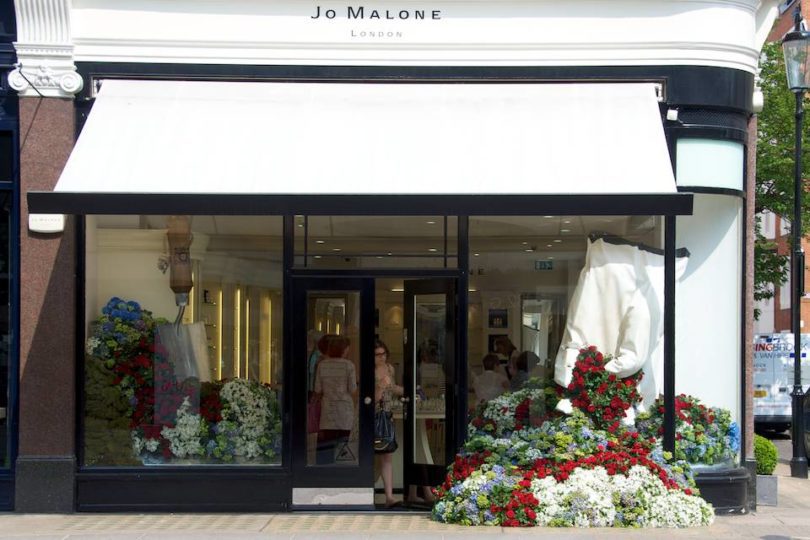

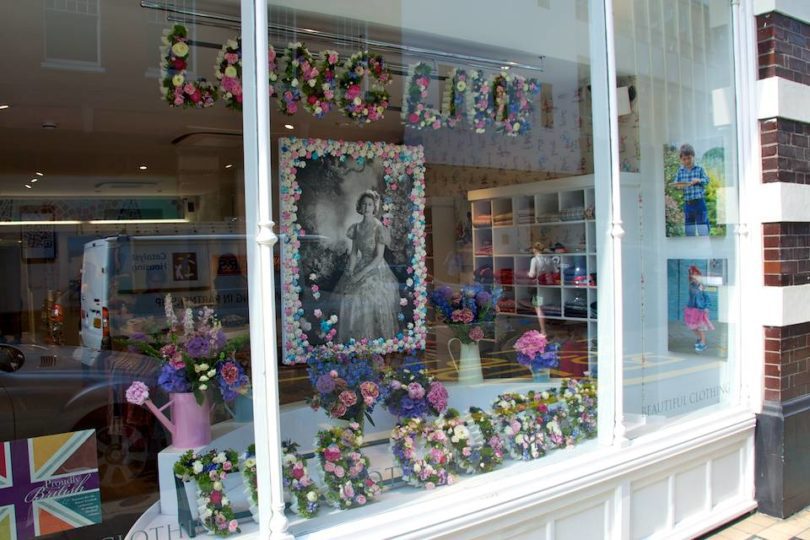
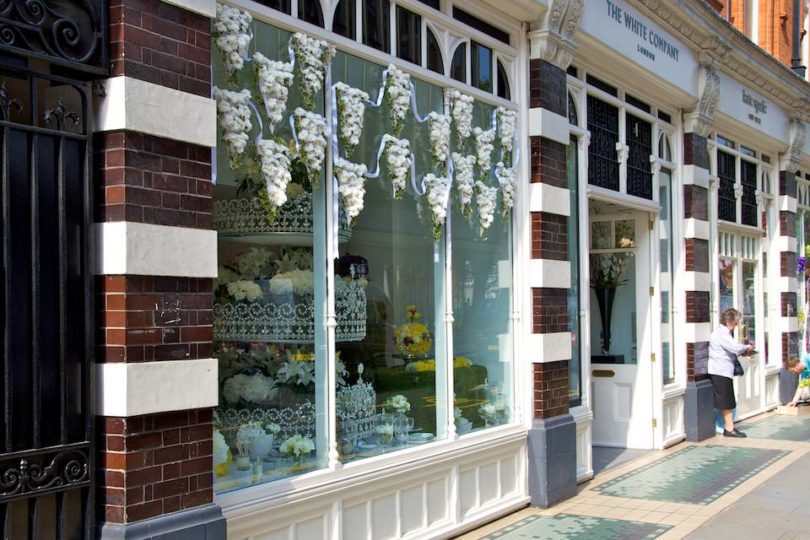

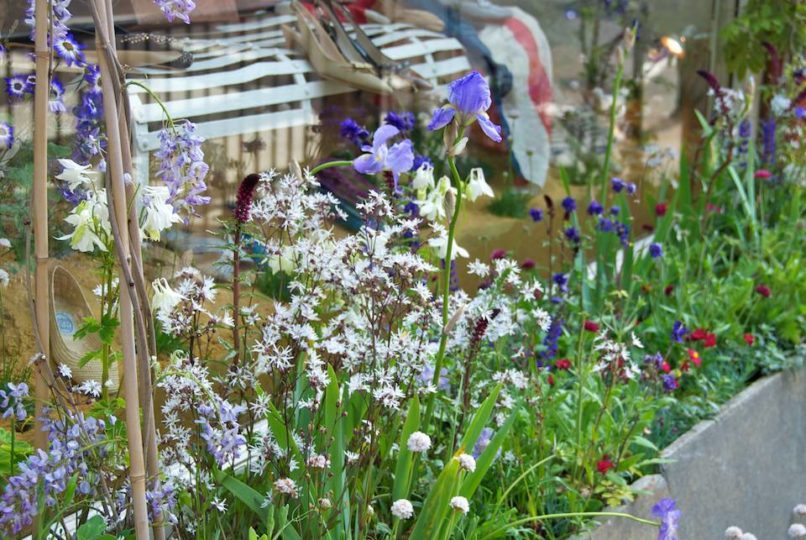

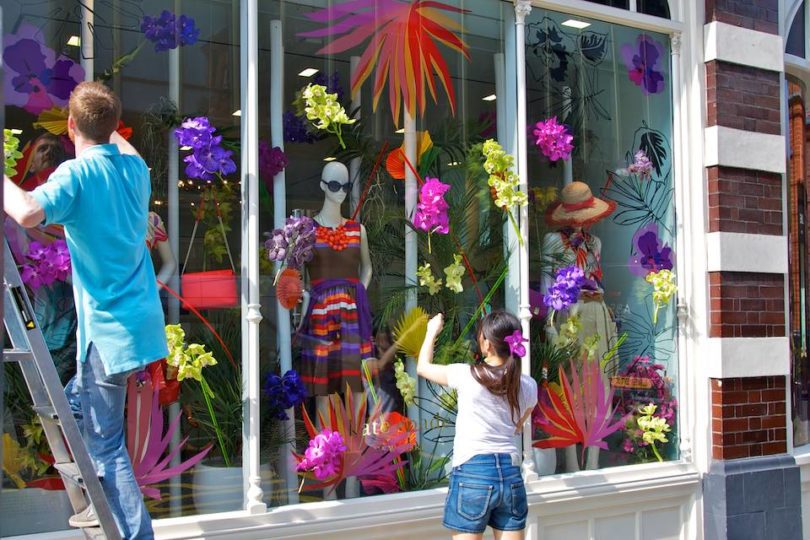
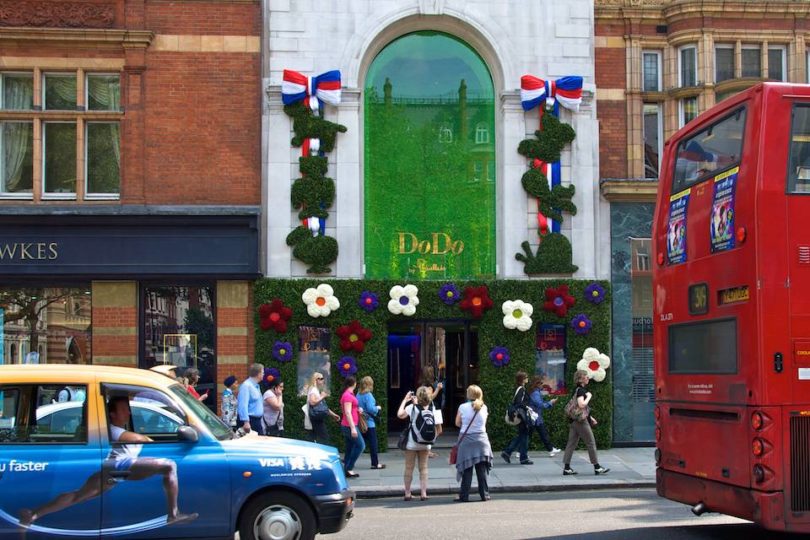
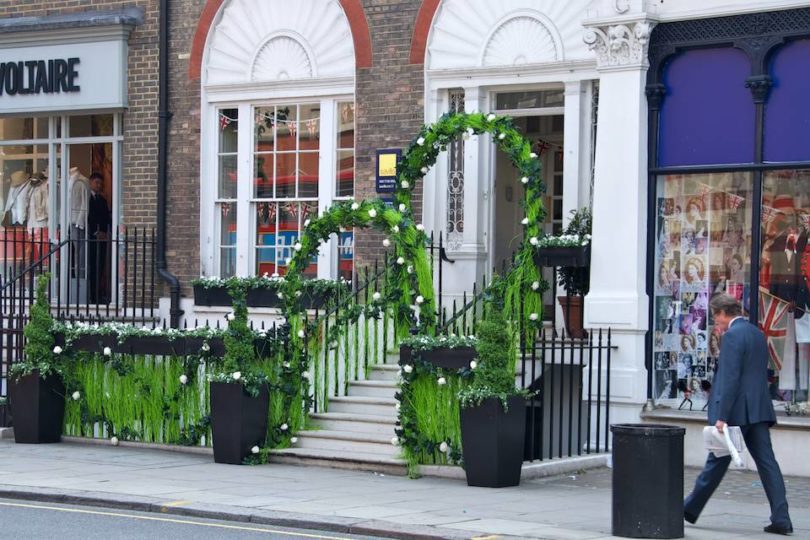
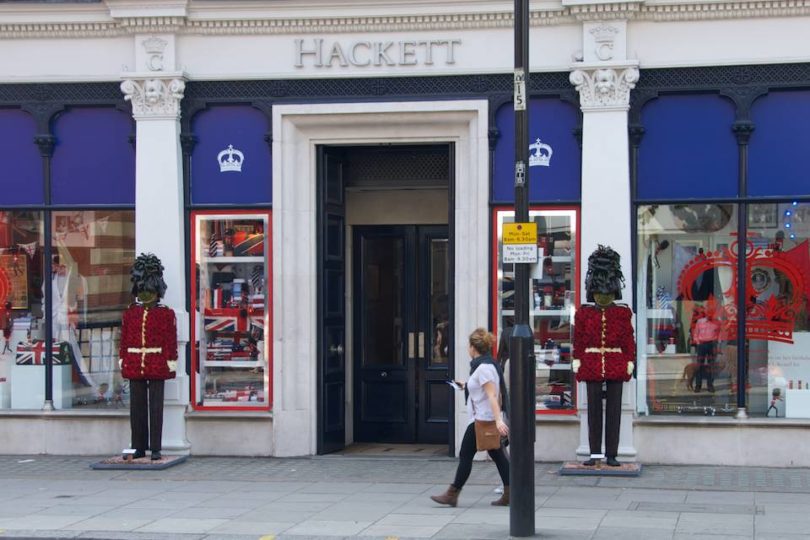
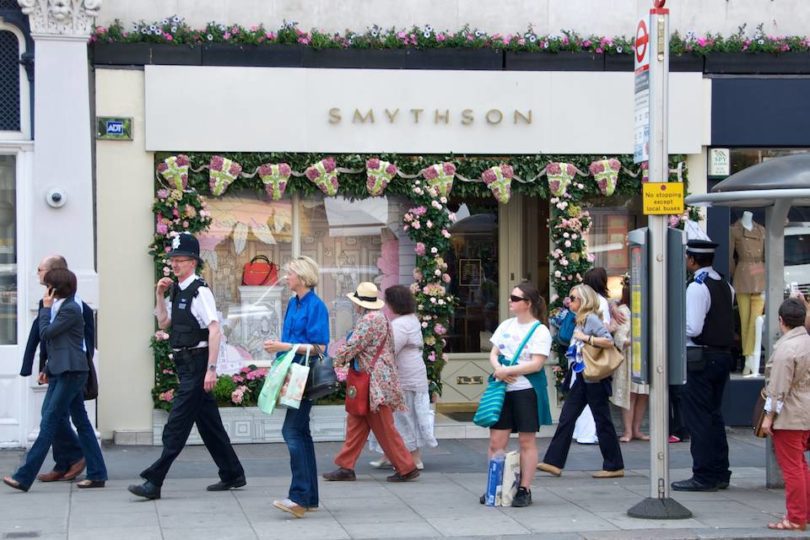
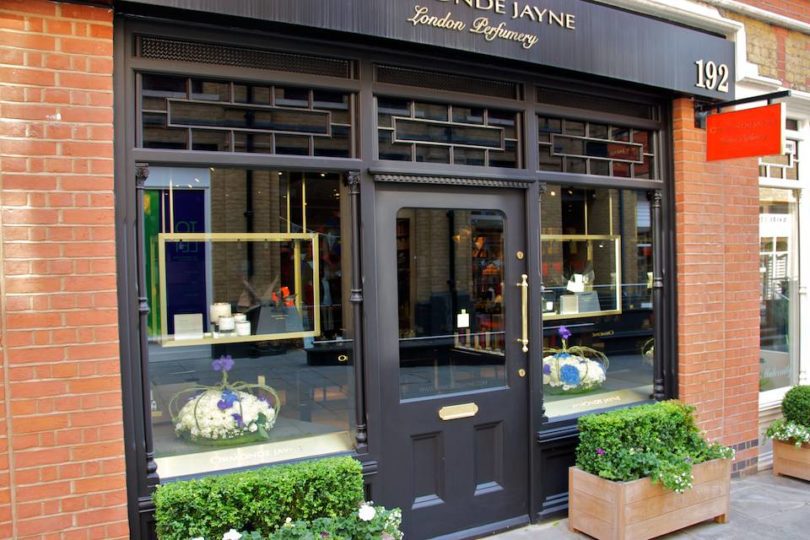
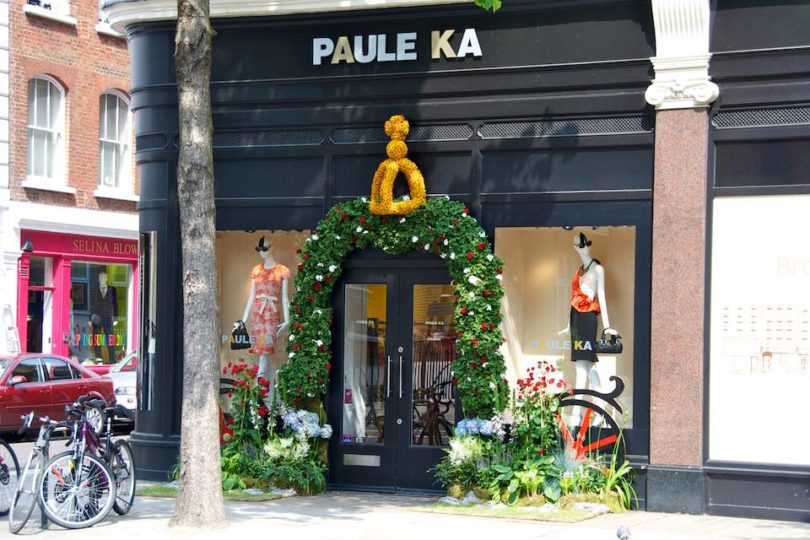
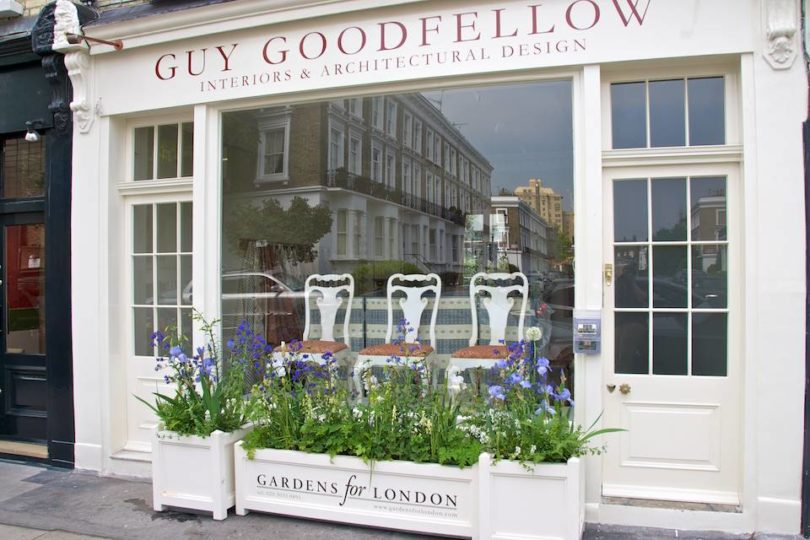
In the Jubilee spirit, the winning display by Liz Earle display with its arches, inspired by the Royal arches that lined the Mall in 1953 for the Queens Coronation, the taking of afternoon tea, and the herbs that feature in their botanical based products, was simply beautiful and smelt wonderful. Surprisingly not featured amongst this year’s Chelsea in Bloom winners, Emma Hope’s display though, has to be my favourite. The delightfully artistic and loose planting, included many of the 2012 RHS Chelsea show garden favourites, such as (a.0.) Lychnis Flos-Cuculi White Robin, Nepeta, Acquilegia Vulgaris, Centaura Montana, Iris Jane Philips, Knautia Macedonica, Lavandula Hidcote, Lysimachia Atropurpurea. The Emma Hope contribution, designed by Kristy Knight Bruce, sourced from West Kingston nurseries, was created by the shop staff. As a nice added touch, for those interested, a plant list was available in the shop.
Ignorant of council rules as to the use of shop front pavements I may be, but one can only hope that more shops follow suit, not just for Chelsea in Bloom, but as part of their sales strategy. Not only will our shops and streets look the better and more interesting for it, but if more shops engage, native pollinators too, could benefit significantly.
